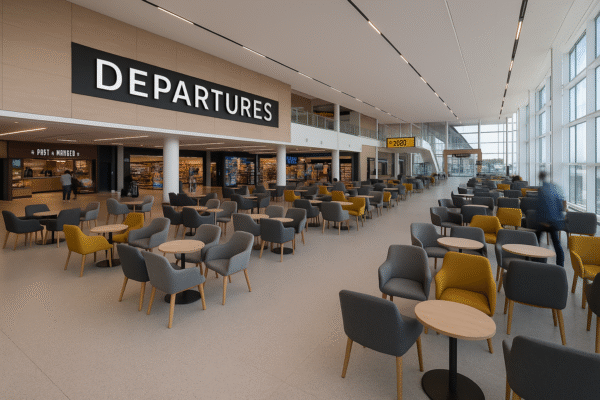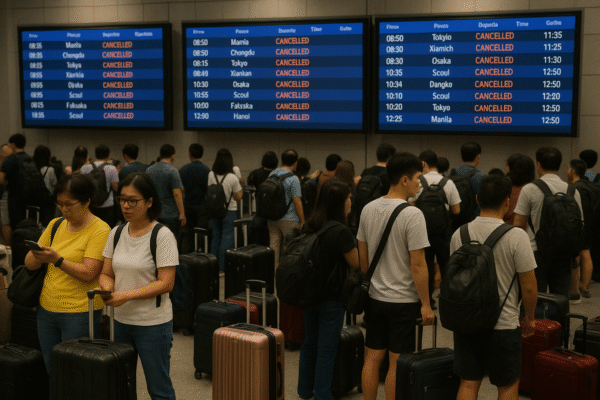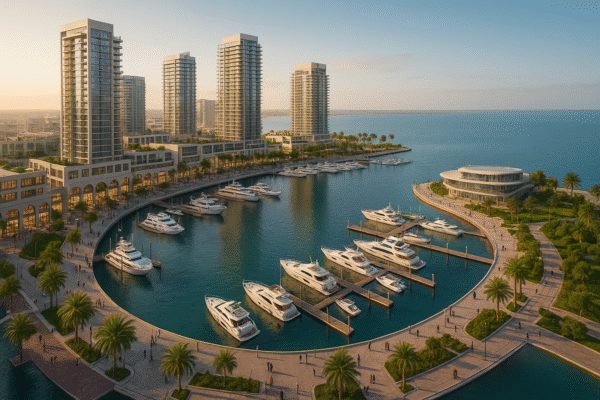Manchester Airport has officially unveiled its new-look Terminal 2 departure lounge as part of its sweeping £1.3 billion transformation plan, positioning the airport as a modern hub for global aviation. With bold architecture, upgraded facilities, and cutting-edge technology, the revitalized lounge marks a milestone in the airport’s 10-year redevelopment strategy and a turning point for travel across Northern England.
The redesign integrates contemporary aesthetics with expanded capacity, creating a spacious, efficient environment for passengers navigating one of the UK’s busiest international gateways. The departure lounge sits at the heart of the new Terminal 2, which is set to become Manchester Airport’s main terminal following the phased closure of the aging Terminal 1.
Enhanced Passenger Comfort and Flow
The updated lounge offers a dramatic improvement in passenger experience. Designed with flow and relaxation in mind, the area now features a broader array of retail outlets, upgraded dining concepts, and significantly increased seating capacity. The expansion remains within the existing footprint of Terminal 2 but seamlessly unites older structures with newly built zones to deliver a cohesive, modern atmosphere.
Passengers can expect streamlined wayfinding, user-friendly signage, digital information displays, and more intuitive layout planning that helps reduce stress during transit. According to Manchester Airport Group (MAG), the redesign is tailored to accommodate rising post-pandemic passenger volumes and to reflect modern travel expectations.
“Terminal 2’s new departure lounge embodies our vision for future-ready aviation infrastructure,” said Chris Woodroofe, Managing Director of Manchester Airport. “We’re creating a world-class experience that reflects the global stature of Greater Manchester and the North.”
Terminal 2 Set to Become the Primary Hub
Terminal 2’s transformation is part of the larger Manchester Airport Transformation Programme (MAN-TP), first launched in 2015. This multi-billion-pound investment aims to double the capacity of the terminal and consolidate airport operations into one streamlined space.
By late 2025, Terminal 2 is expected to handle around 70% of all passengers at the airport. This will result in the eventual closure of Terminal 1, which has served travelers since 1962. The consolidation of services into a single, modernized terminal will reduce transfer times, ease congestion, and enhance operational efficiency.
The move is strategically timed to align with the UK Civil Aviation Authority’s forecasts of steady growth in international and domestic air traffic, with Northern England emerging as a key regional air travel hub.
Operational Improvements and Airside Expansion
In addition to the terminal’s interior upgrades, Manchester Airport is bolstering its airside infrastructure. Thirteen new aircraft stands and multiple boarding gates are being added to Terminal 2, enabling the airport to handle more flights simultaneously.
This expansion will allow greater scheduling flexibility for airlines and minimize gate-related delays, especially during peak periods. The new stands will support both wide-body and narrow-body aircraft, including long-haul services to destinations in Asia, the Middle East, and North America.
The new boarding areas also emphasize speed and accessibility, reducing turnaround times and allowing smoother boarding and disembarkation experiences for travelers.
Sustainability at the Core
Sustainability has been a central pillar of the Terminal 2 overhaul. The new lounge features energy-efficient LED lighting, smart HVAC systems, and responsibly sourced building materials. The design incorporates floor-to-ceiling windows that maximize natural light and reduce the need for artificial illumination.
Manchester Airport is a signatory to the global Airports Council International (ACI) Net Zero 2050 initiative and has pledged to reach net-zero carbon emissions before that deadline. The terminal’s sustainability measures contribute to this broader goal and align with the Greater Manchester Combined Authority’s Clean Air Plan and environmental targets.
Additional sustainability features include:
- Improved recycling and waste reduction systems
- Smart temperature and lighting control technology
- Enhanced green transportation links and EV charging infrastructure
A Gateway to Global Growth
Terminal 2’s transformation is expected to strengthen Manchester Airport’s position as a key gateway for regional, national, and international travel. In 2023, Manchester was the UK’s third busiest airport outside London, serving over 27 million passengers. The upgraded terminal will support continued growth and attract new long-haul services and airline partners.
According to VisitBritain, the North West of England welcomed nearly 3 million international visitors in 2023, contributing £2.5 billion to the regional economy. The airport’s enhanced facilities are projected to boost these figures, supporting tourism growth and business connectivity.
Furthermore, direct rail and road connections make Manchester Airport a vital transport hub not only for Greater Manchester but also for neighboring counties like Cheshire, Lancashire, Yorkshire, and Merseyside.
Looking Ahead
The completion of the new Terminal 2 and its state-of-the-art departure lounge signals a new chapter for UK aviation. With global air travel undergoing rapid transformation, Manchester Airport is setting the benchmark for regional airports by combining modern design, operational efficiency, and sustainability.
Once fully operational, Terminal 2 will redefine the passenger journey from check-in to boarding—whether travelers are heading to London, New York, Dubai, or beyond.
As the aviation industry recovers and evolves, Manchester Airport’s bold investment in future-ready infrastructure ensures it will remain a cornerstone of UK air connectivity for decades to come.
For more travel news like this, keep reading Global Travel Wire


















